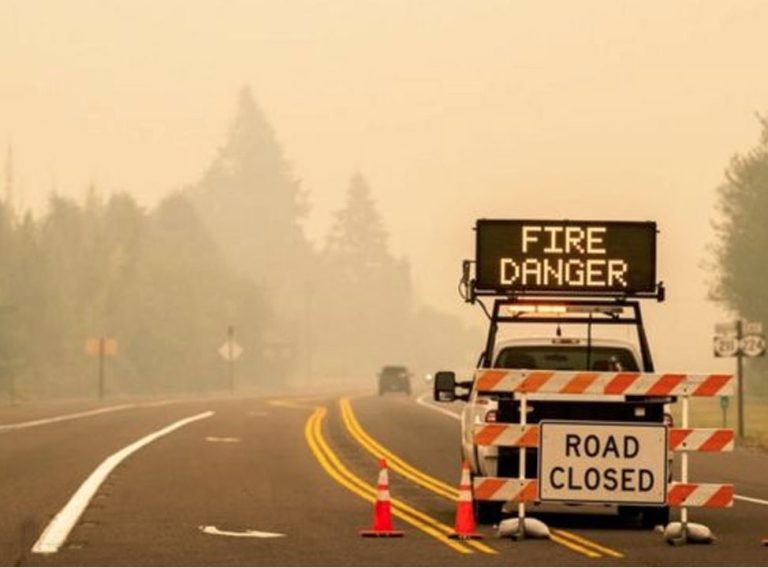
Oregon Public Broadcasting (OPB) recently published an article titled “Climate change will continue to hit Oregonians hard, but the exact impact will depend on where you live,” claiming that Oregon will be affected by climate change in multiple ways serious impact. Areas of concern include an increase in wildfires, rising sea levels and water shortages. [emphasis, links added]
This is mostly false because many of the problems listed are not getting worse and those problems have nothing to do with climate change.
OPB wrote that it is reasonable that different areas of Oregon will face different impacts of climate change; for example, coastal communities will be more concerned about sea levels than communities in eastern Oregon.
But the warnings listed by OPB are interesting. This story discusses not only differences in geography and physical climate, but also different impacts based on demographicssuch as “How many people live there and how much money the local government has on hand.”
These two variables, along with others such as population growth and relative income, are not related to long-term climate change or even short-term weather events.
in spite of, The article goes on to make some false claims about the direct effects of climate change:
“The Oregon Coast faces rising sea levels, algal blooms and shellfish biotoxins. As the population grows, the northern Willamette Valley faces heat waves, increased landslide risk and increased water demands. Northeastern Oregon faces longer fires seasons, scorched crops and an increasing number of destructive pests.
For the sake of brevity, we will not discuss in detail every assertion made in this article, but Nearly all of these alleged dangers are at best exaggerated, and at worst simply don't happen.
Starting from sea level rise, Global mean absolute sea level rise is approximately 1.7+/-0.3 mm per year.
Two of the five available National Oceanic and Atmospheric Administration (NOAA) sea level monitoring stations in Oregon are slightly above this rate, 1.78 +/- 0.58 and 2.52 +/- 0.61 mm/year, or the rest are Below the global average speed. These rates equate to increases of approximately 0.58 feet and 0.83 feet respectively over 100 years (See picture below).

Monitoring stations in Port Orford and Astoria both showed negative sea level risewhich means Land may rise faster than absolute sea level, resulting in a net decrease in relative sea level.
These rates of change are almost impossible to control, Affected areas have enough time to respond to rainfall of less than 3 millimeters per year.
Even the highest rate of sea level rise measured by NOAA in Oregon is well below the 1.4 to 2.75 feet of global mean sea level rise projected by the Intergovernmental Panel on Climate Change in its latest report. level.
This is not the first time OPD has made false claims about heat waves, increased water demand, scorched crops and pests.
climate realism These threats to Oregon agriculture were previously debunked in “Relax Oregon, Climate Change Won’t Increase Droughts, Floods, or Heat Waves” and “No, OPB, Climate Change Won’t Take a Toll on Oregon Farmers,” which states Not only is precipitation not an issue in the state, but crop production has been increasing, with yields of major crops surging almost every year.
For example, hazelnut production has increased by 149% since 1999.
Regarding wildfires, OPB reports that Oregonians say hiking and other outdoor activities have become more difficult due to wildfire smoke and heat. Likewise, the data does not support the anecdotal claims of select hikers quoted in the OPB story.
In this case, the hiker's perception simply doesn't match reality. Except for the two-year outliers in 2020 and 2021, Data from the Oregon Department of Forestry shows there are not yet any trends in the area burned by wildfires. (see picture below)

Oregonians are not threatened by the growing threats of climate change, even if they feel they are.
In this case, their reported experiences of climate change impacts are more likely to be due to Media reports incorrectly attribute every bad weather or wildfire incident to climate change rather than because these phenomena are worsening.
OPB is a big part of the problem, pushing the false narrative that a climate crisis is occurring in Oregon. A quick search of their website shows more than 7,000 results for the term “climate change.”
It would be journalistic malfeasance to hide or obfuscate real data that show the prosaic fact of modest climate change. OPB should stop misleading viewers. The best evidence from real-world data shows that Oregonians do not face a climate crisis.
Read more Climate Realism
